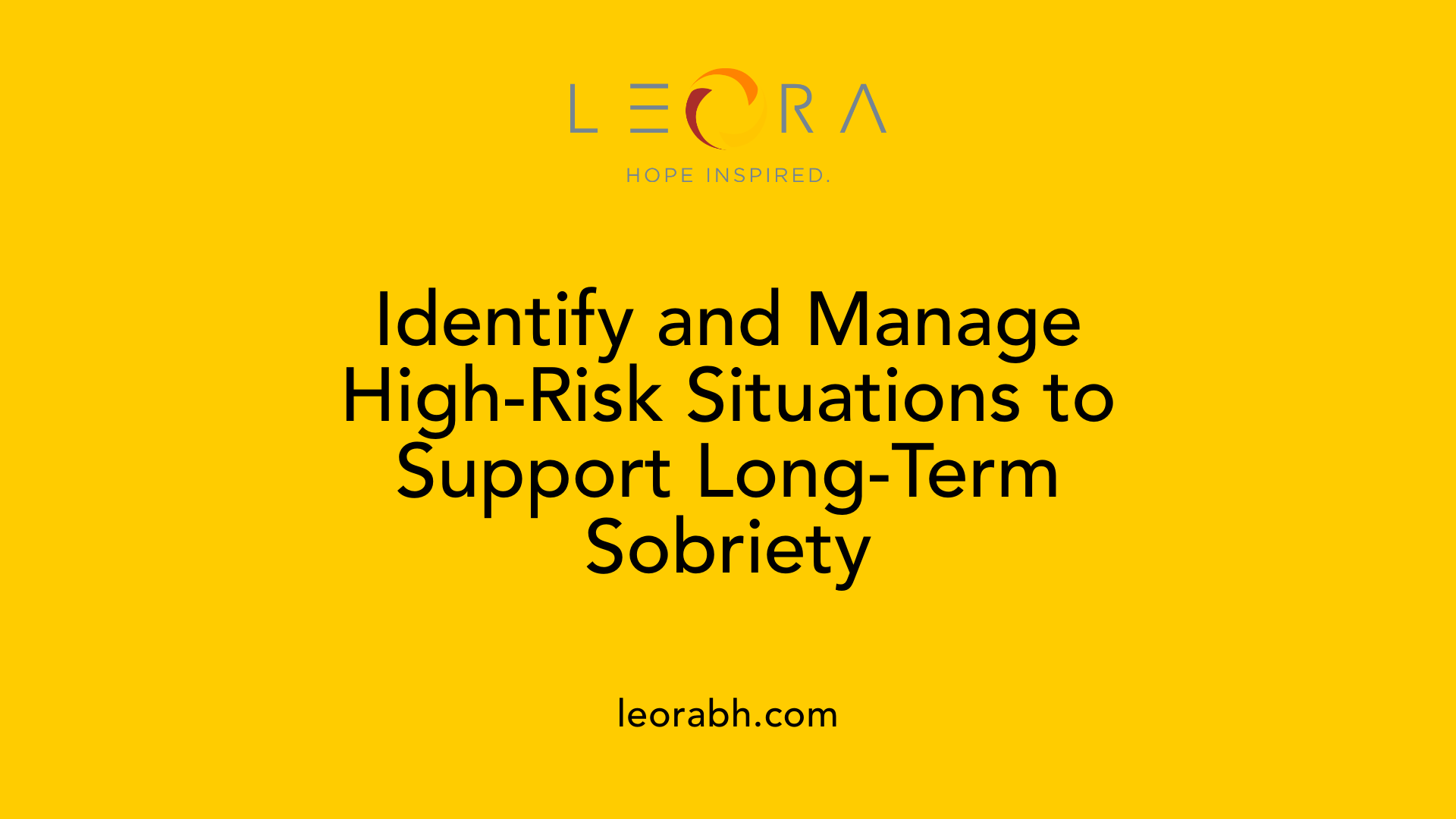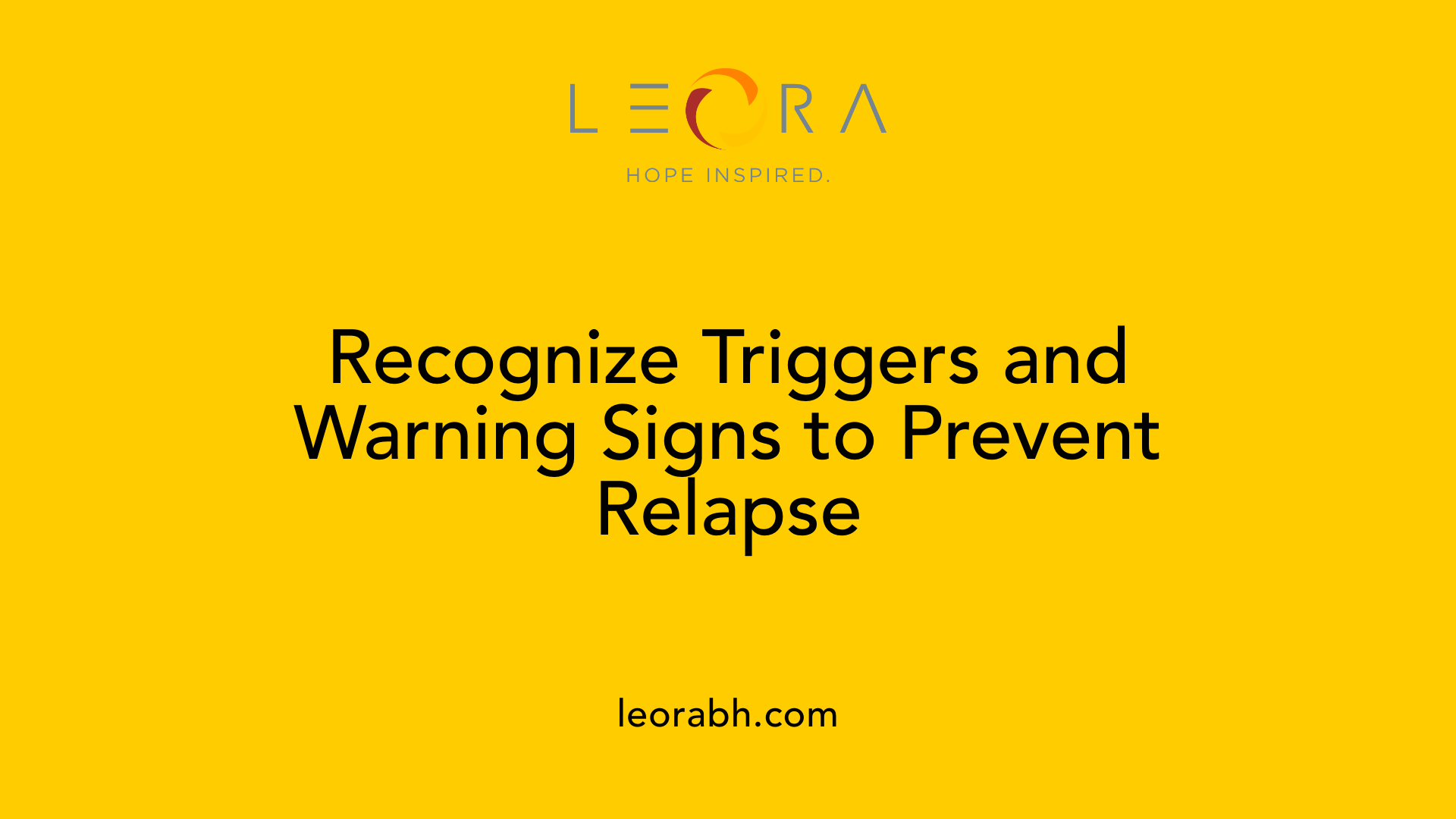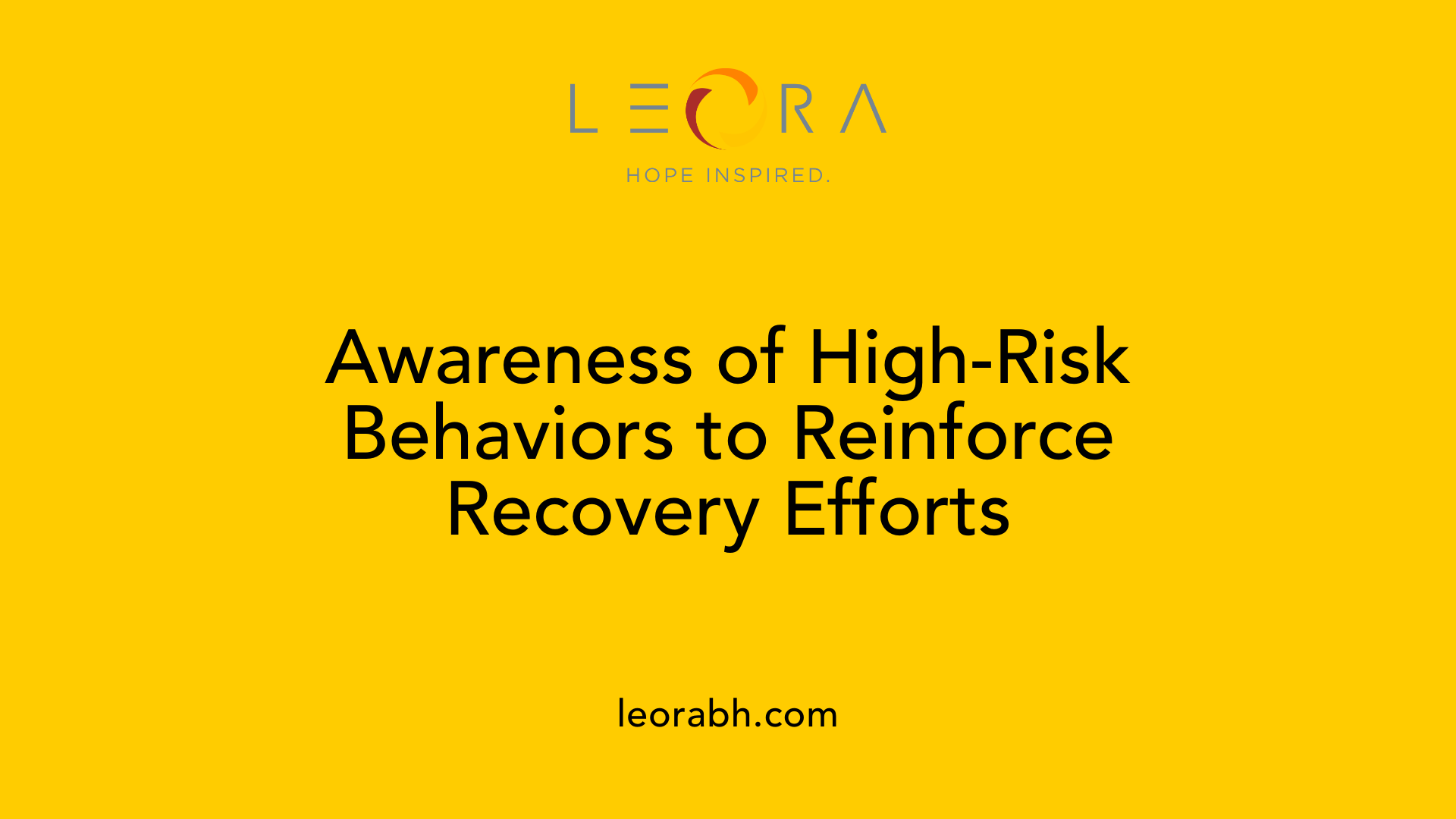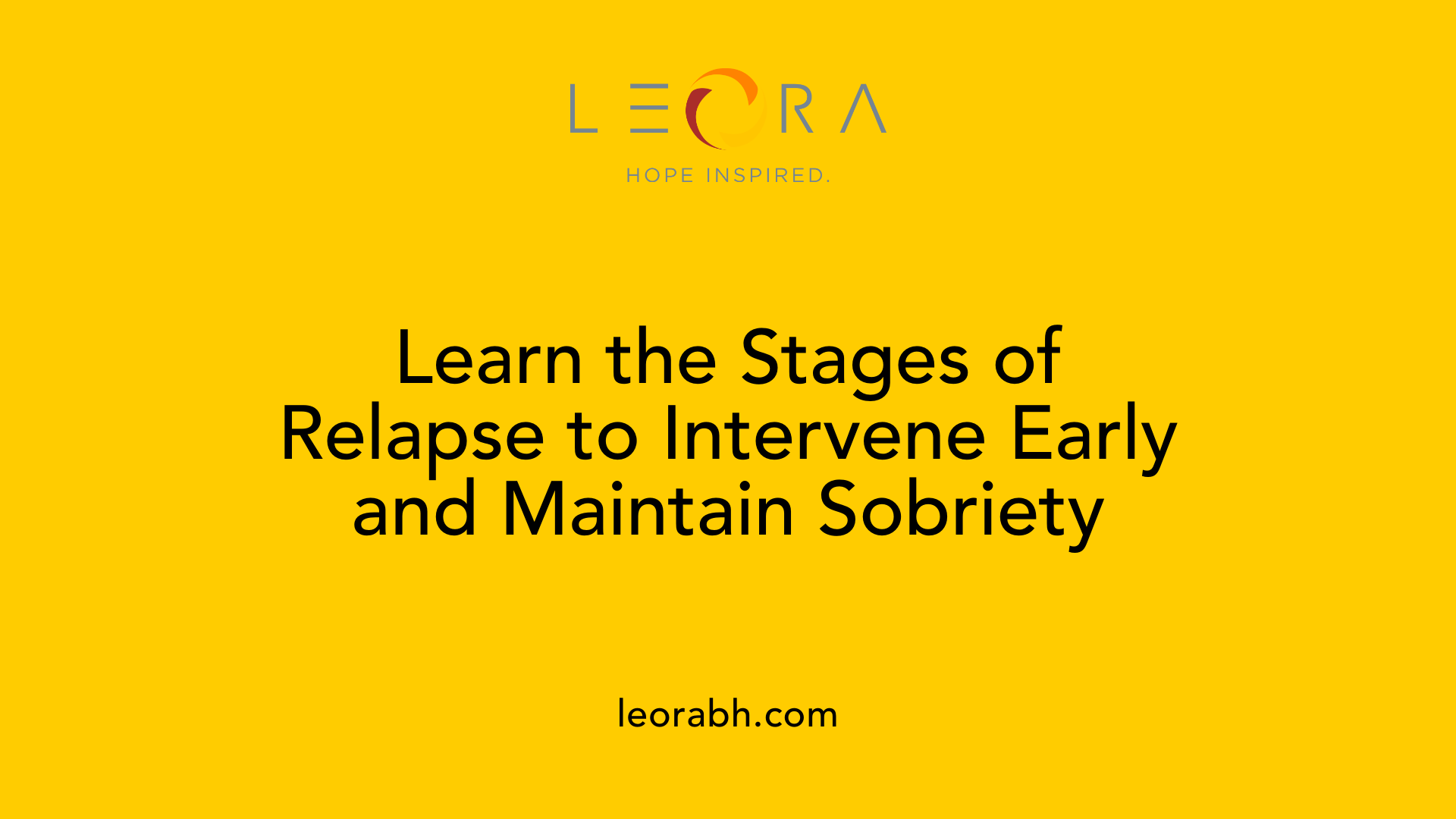Identifying High-Risk Situations in Substance Use Recovery
Navigating the Path to Sobriety: Recognizing and Managing High-Risk Situations
Understanding the Critical Role of High-Risk Situations in Substance Use Recovery
Recovery from substance use is a complex, lifelong journey that necessitates awareness, planning, and support. Among the many challenges faced by individuals in recovery, high-risk situations pose significant threats to maintaining sobriety. Recognizing these scenarios—whether rooted in emotional upheaval, environmental cues, or social pressures—is essential for developing effective relapse prevention strategies. This article explores what constitutes high-risk situations, common relapse triggers, and practical approaches to managing and navigating these perilous moments to foster sustainable recovery.
Defining High-Risk Situations in Recovery

What are high-risk situations in addiction recovery?
High-risk situations are specific scenarios or events that can threaten a person’s sobriety during recovery. These situations are often linked to both external environments and internal emotional states that increase the likelihood of relapse.
External triggers include being in places associated with past substance use—such as bars, parties, or certain neighborhoods—and encountering people involved in or connected to drug or alcohol use. Seeing paraphernalia, specific objects, or even familiar music can also serve as reminders of past substance use.
Internal triggers involve strong emotional responses like stress, anger, boredom, depression, or anxiety. Physical discomfort or fatigue, along with feelings of loneliness or shame, can heighten cravings. Even positive emotions such as excitement or joy might sometimes serve as triggers, especially if they bring about thoughts of celebrating with substances.
Recognizing these high-risk situations is crucial for effective relapse prevention. Developing a personalized plan, which might include exiting risky environments, avoiding certain social circles, or employing mindfulness and coping techniques, helps manage these triggers. Additionally, building a strong support system—comprising friends, family, support groups, and mental health professionals—provides vital assistance in navigating challenging circumstances.
Understanding these scenarios allows individuals in recovery to anticipate potential threats, take proactive steps, and reinforce their commitment to sobriety. Overall, awareness and preparation are fundamental in minimizing exposure to high-risk situations and maintaining a lasting recovery.
Common Triggers and Warning Signs of Relapse

What are common relapse triggers and warning signs?
Relapse in addiction recovery can be influenced by internal emotional states and external environmental cues. Recognizing these triggers is crucial for maintaining sobriety.
External cues such as specific locations—like bars, parties, or places associated with past substance use—can serve as potent reminders and temptations. Encountering certain people, especially those involved in previous substance use, or being in social situations where substances are present, significantly raises relapse risk. Objects like paraphernalia or even seeing bottles or drug-related items can trigger cravings.
Internal emotional states also play a major role. Feelings of stress, depression, anxiety, loneliness, guilt, or boredom often heighten the urge to relapse. Negative emotions, if unmanaged, can lead individuals to seek comfort through substances. Positive emotions like excitement or celebration, while seemingly harmless, can also prompt risky behaviors, especially if coupled with a false sense of control.
Behavioral changes and thoughts are telltale warning signs. These include romanticizing past drug use, reminiscing about the perceived positive aspects without considering the negatives, or re-engaging in old habits, such as socializing with old friends who use substances. A decline in self-care routines, social withdrawal, or avoidance of support groups are additional signs.
Relapse typically unfolds in three stages: emotional, mental, and physical. Emotional relapse involves neglecting self-care, bottling up feelings, and isolating oneself—often the earliest warning sign. Mental relapse is characterized by internal conflict, cravings, rationalizations, and thoughts about using. Physical relapse, the final stage, involves actual substance use.
Early identification of these triggers and warning signs allows individuals to apply coping strategies, reach out for support, and prevent a full relapse. Developing a relapse prevention plan, which includes recognizing emotional and environmental cues, is essential for long-term recovery success.
Understanding Risk Factors for Substance Abuse

What are risk factors that can indicate a high likelihood of substance abuse?
Identifying individuals at risk for substance abuse involves recognizing a range of personal, social, and environmental factors that can increase the chances of developing a dependence. A significant risk factor includes past experiences of physical or sexual abuse, which can lead to emotional trauma and coping mechanisms that involve substance use.
Family dynamics also play a crucial role. Dysfunctional family relationships, parental substance abuse, or incarceration can create an unstable environment that heightens vulnerability. Such environments may lack the necessary emotional support and guidance, making it easier for adolescents and adults to turn to substances as a form of relief.
Peer involvement is another strong indicator. Engaging regularly with friends or social groups involved in drug use, alcohol consumption, or related criminal activities substantially raises the likelihood of experimenting with or regularly using substances.
Tobacco use is often cited as a gateway, signaling increased risk due to its close association with other substance use behaviors.
On a personal level, mental health issues like depression, anxiety, and post-traumatic stress disorder (PTSD), along with a history of trauma, can predispose individuals to substance reliance as a form of self-medication.
Environmental influences such as living in high-stress communities, having easy access to drugs, or social norms that favor substance use furthercompound this risk.
Special populations, including adolescents—which are in critical developmental stages—and women, who may face unique societal pressures and health issues, are particularly vulnerable.
Routine screening in healthcare settings helps identify at-risk individuals early. Validated assessment tools can detect potential problems before they develop into full-blown addiction, allowing for timely intervention and support.
A comprehensive understanding of these conditions underscores the importance of early detection and targeted prevention programs. Recognizing the multifaceted nature of risk factors enables clinicians, families, and communities to implement effective strategies for reducing the likelihood of substance abuse and supporting long-term recovery.
High-Risk Behaviors Linked to Addiction

What are common high-risk behaviors associated with addiction?
High-risk behaviors related to addiction encompass a variety of substance use activities and behavioral compulsions that significantly impact health and social well-being. Substance-related activities commonly include the use of alcohol, nicotine, opioids, cannabis, and stimulants such as cocaine or methamphetamine. These behaviors often involve repeated use, tolerance development, withdrawal symptoms, and the risk of overdose, all of which can cause long-term health problems and social disruption.
In addition to chemical substance use, behavioral addictions are widespread. These include compulsive engagement in activities like gambling, overeating, gaming, excessive internet or social media use, sex, pornography, shopping, exercising, and workaholism. Such behaviors can become harmful when they interfere with daily functioning, relationships, or lead to financial and emotional instability.
Many of these risky behaviors share similar features, such as craving, loss of control, continued engagement despite adverse consequences, and relapse tendencies. For instance, gambling can lead to financial ruin, while excessive internet use may cause social isolation.
The impact of these behaviors extends beyond individual health, affecting families, communities, and workplaces. They often result in physical health issues, mental health disorders, social conflicts, and economic hardship. Recognizing these patterns is essential for early intervention and effective treatment.
Health authorities classify several of these addictions as mental disorders, emphasizing their significance and the need for comprehensive treatment strategies. Cognitive-behavioral therapy, support groups, medication, and lifestyle changes are commonly employed approaches to manage and overcome these risky behaviors.
Overall, understanding the spectrum of high-risk actions associated with addiction allows for tailored prevention and intervention strategies, crucial for fostering recovery and restoring well-being.
Stages of Relapse in Substance Use Recovery

What are the stages of relapse and their signs?
Relapse in substance use recovery typically unfolds in three sequential stages: emotional, mental, and physical. Recognizing these stages early on is crucial for implementing effective prevention strategies.
During the emotional relapse stage, individuals often exhibit signs such as bottling up feelings, withdrawing from social interactions, neglecting self-care routines, and experiencing symptoms like irritability, restlessness, and discomfort. These emotional states can create a state of vulnerability, making it easier to slip into the next stage.
The mental relapse phase is characterized by internal conflicts and thoughts swirling around the idea of using again. Warning signs include craving or longing for substances, justifying past use, minimizing the dangers, and bargaining with oneself about controlling use. Individuals might also experience ambivalence and conflicted feelings about their sobriety.
Finally, physical relapse occurs when the individual begins actually using substances again. This stage is often triggered by perceived opportunities, such as being in environments associated with past use or encountering specific triggers, coupled with a lack of coping skills.
Understanding these stages enables individuals and recovery professionals to act proactively. Early detection of emotional or mental signs allows for timely intervention, including reaching out for support, practicing coping strategies, or modifying the recovery plan. By addressing these warning signs early, it’s possible to prevent the progression to full-scale relapse, thus supporting long-term sobriety and recovery success.
Developing Effective Relapse Prevention Strategies

How can individuals develop effective relapse prevention plans?
Creating a successful relapse prevention plan begins with thorough self-awareness. Individuals should first pinpoint their personal high-risk situations—these can include certain places, people, emotional states, or specific events that tend to trigger cravings or thoughts of using substances.
Once these triggers are identified, developing tailored coping strategies is crucial. Techniques such as mindfulness meditation or deep breathing exercises can help manage cravings and reduce emotional distress. Building healthy routines, including regular exercise, balanced nutrition, and sufficient sleep, enhances resilience against relapse.
Avoiding known triggers is another important step. This may involve distancing from certain social settings, avoiding places associated with past substance use, or eliminating objects like paraphernalia that prompt cravings.
Establishing a strong support network is vital. Staying connected with friends, family, or support groups such as Alcoholics Anonymous provides accountability, encouragement, and a sense of community.
Preparing an emergency action plan can make a significant difference during high-risk moments. This plan includes having contact information ready for supportive individuals, identifying nearby safe spaces, and knowing how to reach out quickly when cravings or emotional struggles arise.
Regularly reviewing and adjusting the plan ensures it remains relevant and effective. After setbacks, reflecting on what triggered the relapse and modifying strategies accordingly strengthens long-term commitment.
Incorporating professional interventions such as cognitive-behavioral therapy (CBT) and mindfulness-based relapse prevention (MBRP) can further support individuals. These approaches help develop cognitive and behavioral skills to handle stressors and triggers.
Lifestyle changes, including adopting healthy habits and engaging in activities that promote personal growth, are fundamental for maintaining sobriety. Overall, a comprehensive, personalized approach that combines these elements can significantly reduce relapse risk and support ongoing recovery.
Integrating Mindfulness and Support in Recovery

What strategies can help manage high-risk situations effectively?
Managing high-risk situations during recovery requires a combination of awareness, proactive planning, and support. One effective approach is practicing mindfulness-based techniques such as meditation and deep breathing exercises. These methods help individuals observe cravings and emotional reactions without judgment, reducing the likelihood of impulsive responses.
Building a robust support network is vital. Engaging with friends, family, or recovery groups like Alcoholics Anonymous provides emotional backing, accountability, and encouragement throughout the recovery journey. Sharing experiences within these groups often reinforces commitment and provides valuable coping strategies.
Developing healthy coping skills is equally important. Activities such as journaling, engaging in hobbies, or physical exercise can divert attention from cravings and reduce stress levels. Setting clear boundaries—avoiding certain environments, people involved in past substance use, or triggers—helps in reducing exposure to high-risk cues.
A personalized relapse prevention plan is a critical tool. Preparing and rehearsing this plan—including strategies for emergency situations—enhances readiness and confidence when faced with challenging scenarios. Maintaining a balanced lifestyle with proper nutrition, regular physical activity, and sufficient sleep strengthens resilience.
Finally, cultivating self-efficacy—the belief in one's ability to manage triggers—is fundamental for long-term sobriety. Confidence in handling high-risk situations empowers individuals to navigate the recovery process successfully and sustain their progress.
Conclusion: Embracing Ongoing Vigilance and Support
 Recognizing high-risk situations plays a vital role in maintaining sobriety during recovery. It empowers individuals to identify environmental, emotional, and social triggers before they lead to relapse. By understanding these risks, they can develop tailored coping strategies and have clear plans of action, such as withdrawing from harmful environments or seeking support.
Recognizing high-risk situations plays a vital role in maintaining sobriety during recovery. It empowers individuals to identify environmental, emotional, and social triggers before they lead to relapse. By understanding these risks, they can develop tailored coping strategies and have clear plans of action, such as withdrawing from harmful environments or seeking support.
Recovery is not a one-time achievement but a continual journey that benefits from lifelong commitment and a strong support system. Support networks like friends, family, recovery groups, and professional counselors provide crucial encouragement, accountability, and guidance. These connections help individuals navigate complex emotions and high-risk situations more effectively.
Furthermore, relapse prevention plans should be dynamic, regularly reviewed, and adjusted to reflect new challenges or insights. This ongoing process helps reinforce coping skills, adapt to changing circumstances, and strengthen resilience.
Recognizing relapse as a natural component of recovery rather than a failure fosters a healthier attitude. It encourages persistence, self-compassion, and continuous learning. The combined effort of vigilance, adaptable strategies, and steadfast support creates a foundation for long-term sobriety.
Ultimately, ongoing mindfulness and proactive engagement are necessary to sustain recovery. By embracing these principles, individuals can better handle setbacks, maintain motivation, and achieve a fulfilling, substance-free life.
Fostering Sustainable Sobriety Through Awareness and Preparation
Recognizing high-risk situations, understanding relapse triggers, and developing personalized coping strategies are vital components of a successful recovery journey. By maintaining vigilance, building a supportive environment, and continually refining relapse prevention plans, individuals can significantly reduce the risk of relapse. Embracing recovery as a lifelong process—where setbacks are viewed as opportunities for growth—empowers individuals to sustain their sobriety and build a healthier, drug-free life.
References
- Recognize & Overcome High-Risk Situations in Recovery
- High Risk Situations Predicting Relapse in Self-Referred Addicts to ...
- High-Risk Situations - ORTC
- Coping Strategies for High-Risk Situations: Preparing Your Relapse ...
- Coping With High-Risk Situations in Addiction Recovery
- High-Risk Recovery Situations – What Should I Do? | Rehab MI
- My Triggers & High-Risk Situations – Mapping Exercise - Addicted.org
- Addiction Relapse: Risk Factors, Coping & Treatment Options
- Relapse Prevention and the Five Rules of Recovery - PMC
- [PDF] Coping With High-Risk Situations
Find Your Inner Light
Related Articles
Schedule an Assessment
Leora Behavioral Health provides comprehensive treatment services, including ambulatory detox, mental health IOP, and SUD IOP, to support your journey toward lasting recovery.
Our caring team will guide you through the admissions process and create a personalized treatment plan tailored to your unique needs. We welcome walk-ins. If you or a loved one is struggling, reach out today. We’re here to help.


.svg)




.svg)
.svg)
.svg)
.svg)
